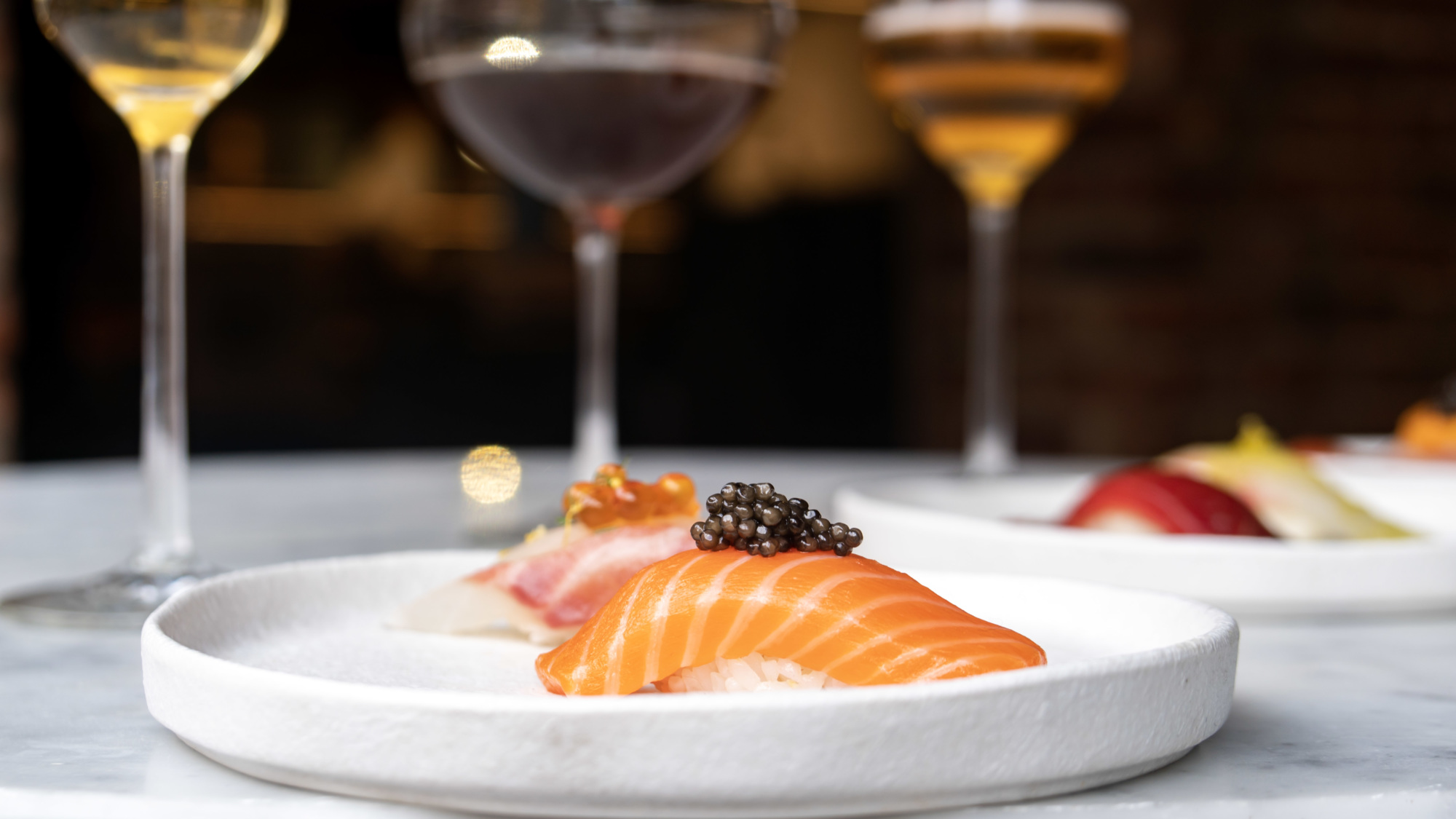
All About Michelin-Starred Moody Tongue’s New Sushi Restaurant in New York
Do black truffles belong in beer? That’s a great question — and one that Chicago’s Moody Tongue Brewing Company, the world’s only two Michelin-starred brewery, asks themselves as they open their first New York restaurant in Greenwich Village this Friday, Feb. 10.
Before you go, here’s everything you need to know about Moody Tongue Sushi.
1. This isn’t a replica of what you’ll find at Moody Tongue in Chicago.
Moody Tongue won’t be importing Chicago’s signature deep-dish pizza and Italian beef sandwiches with it, nor will they be serving the fine-dining tasting menu from executive chef Jared Wentworth that’s earned them accolades, including those aforementioned Michelin stars. Instead, their dynamic inventory of beers will be presented alongside something else entirely: the subtleties of sushi, served a la carte or as a progression with beer pairings, with three, five, or seven courses.
Brewmaster Jared Rouben, a former cook at Per Se and former brewer at Chicago’s Goose Island brewery, along with his cousin, Jeremy Cohn, Moody Tongue’s CEO and founder, are about to introduce their philosophy of progressive beer pairings with fanciful food to the East coast, by way of Japan.
“The way I see sushi, and the creation of it, is similar to beer,” says Rouben. “[It’s] minimalism — [taking] a few select ingredients and letting them shine.”
Since 2016, Moody Tongue’s South Loop restaurant has gleaned from global inspirations in both its more casual bar and in its 15-seat dining room, where Wentworth crafts an exquisite tasting menu. The menus there are an amalgamation of Mediterranean ingredients, Middle Eastern spices, and European sauces, with a certain magnetism towards Japanese ingredients. For instance, you might start with oysters with yuzu ponzu, and then find yourself feasting on A5 Miyazaki Wagyu, Hokkaido scallops and sea urchin, as well as ikura (salmon roe).
But in envisioning Moody Tongue Sushi in New York, Rouben and Cohn decided to go all in with Japanese cuisine, hiring executive chef Hiromi Iwakiri, a 25-year alumnus of many of New York’s illustrious sushi dens and kaiseki joints, like Kodama Sushi, Lan, and Hirohisa.
2. Beer and sushi have always been a perfect pairing.
Sushi beverage experiences have long been relegated to three main beer superpowers: Asahi, Kirin, and Sapporo, all of whom, since the 1980s, vied for brewing supremacy during the so-called Dry Wars. What turned into a decades-long marketing campaign produced a bunch of analogous 5% ABV (alcohol by volume) pale lagers. Sushi seemingly found its forever non-sake partner in these beers. And whereas many of today’s domestic craft brewers are trying to push beer flavors and styles outside of that prototypical formula, Rouben says he isn’t trying to fix something that’s not broken — he’s just trying to raise the bar.
A single uncooked Hokkaido scallop is adorned with the profundity of Périgord black truffle, paired with Moody Tongue’s Shaved Black Truffle Rice Lager, exclusive to New York. Rouben uses beer as a way to “bridge what’s on the plate with what’s on the palate.” In his mind, “beer is liquid food” — a form that should elevate a dish, rather than disassociate the experience. “We start off the meal with a pure taste, pure bite, the palate is clean, and beer is wonderful — as are effervescent beverages, like Champagne — but instead we use [pale lagers like] pilsners and helles to bring the wanted carbonation.”
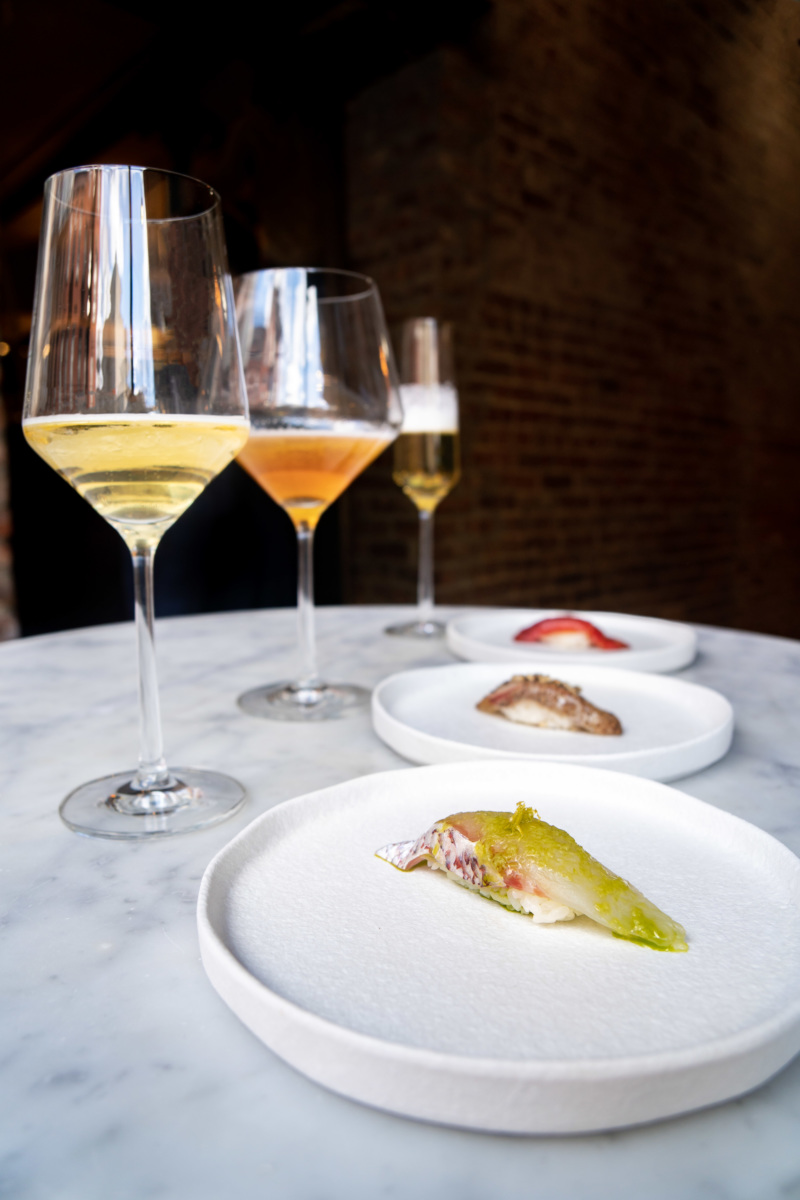

3. Here’s a sneak peek of what to expect on the menu.
Cohn, the more business-minded of the two, talks about square footage (the restaurant is just over 2,000 square feet), seating (about 40), and the number of draft lines (16 in all), that will serve signature beers like Moody Tongue’s Pressed Asian Pear Saison; it’s a special brew for which their staff handpicks more than 2,000 pounds of Asian pears at Oriana’s Orchard in Northern Illinois. The juice ages in stainless-steel tanks for two years, then in white wine barrels for one, before getting blended, and then served in a flute, not unlike a vintage Champagne. It’s ripe with hints of apple, brioche, and naturally, pear, served next to a singular shrimp uni caviar nigiri.
“When we first opened, 10 years ago, the brewery was rooted in the kitchen, using similar language as a standpoint,” reflects Cohn, who looks at beer and food as similar expressions of time and temperature. He jokes, “One takes three hours to make, and the other takes three weeks [minimum.]”
A Sangiovese oak barrel-aged Flanders Ale, one they call the “Burgundy of beers,” is “multidimensional, and pairs well with red meats,” says Cohn. Rouben pairs that with a nigiri of wagyu, torched zuke tuna (marinated in soy sauce, mirin and their own Toasted Rice Lager, and topped with a sunchoke mayo). “The Flanders Ale is aged for over two years, then we brew the same recipe fresh, blending ⅔ aged, ⅓ fresh, for a sweet-and sour cherry rhubarb, with a pinch of balsamic.
A Sour Watermelon Saison is suggested for a dish of king crab, black lime gastrique and cilantro. Rouben poeticizes that “the sweetness from the crab and the sourness of the gastrique mirror the saison, while the cilantro pulls out the little dill cucumber note in the beer as well.”

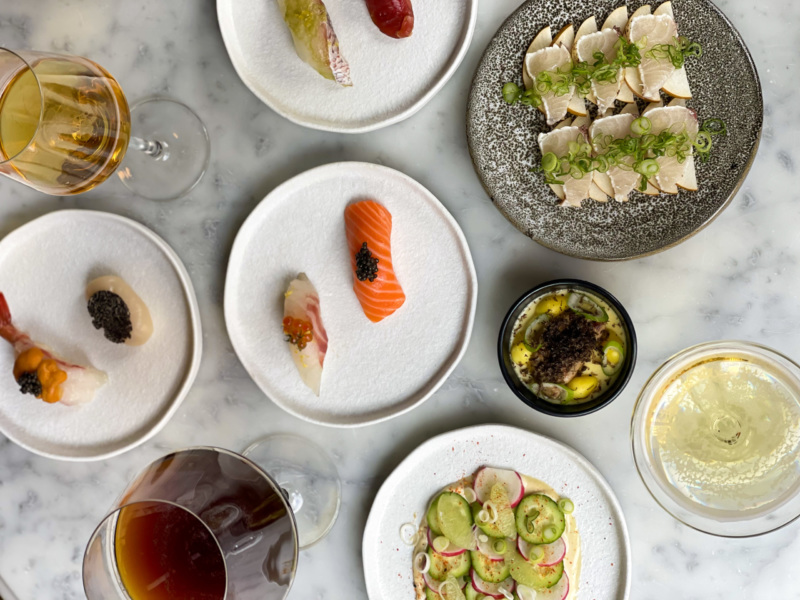
4. Beer nerds and non-beer nerds alike will feel welcome.
Moody Tongue’s beer naming convention has three parts: culinary technique, flavor aromatic, and beer style. It’s all about transparency, e.g. Orange Blossom Belgian Blonde. One aberration is their aperitif Pilsner, a light German-style beer that’s meant to “wake up your palate before a delicious meal.” But if you don’t know what a Cassis, Lambic, or Oud Bruin is, Cohn’s staff is there to help. “We do things differently. We train our team when asked about recommending pairings, not to overly complicate things with archaic language — grain build, hop build, what are fuggles [other than just a funny word] — instead of citrus, we might say grapefruit.”
Similarly, Cohn and Rouben are familiar with the Japanese concept of omotenashi, a way of mindful hospitality. Cohn continues by saying, “we have always believed that attention to detail in service is an integral part of a guest’s experience, and we choreograph our steps of service to both ensure there are special touches throughout the evening and also allow our service team the flexibility to create unique, personalized experiences.”
They’ll be bar snacks, too: handrolls, a play on ohitashi (spinach salad), chawanmushi, and karaage (Japanese fried chicken). And while all beer pairings are suggested, not imposed, Rouben keeps most of Moody Tongue’s IBUs (International Bitterness Units) pretty low. “There’s not much intense bitterness in our beers, other than our Juiced Lychee IPA,” states Rouben, “IPAs can be meals as their own — so much flavor sometimes becomes overwhelming with a delicate pairing.”
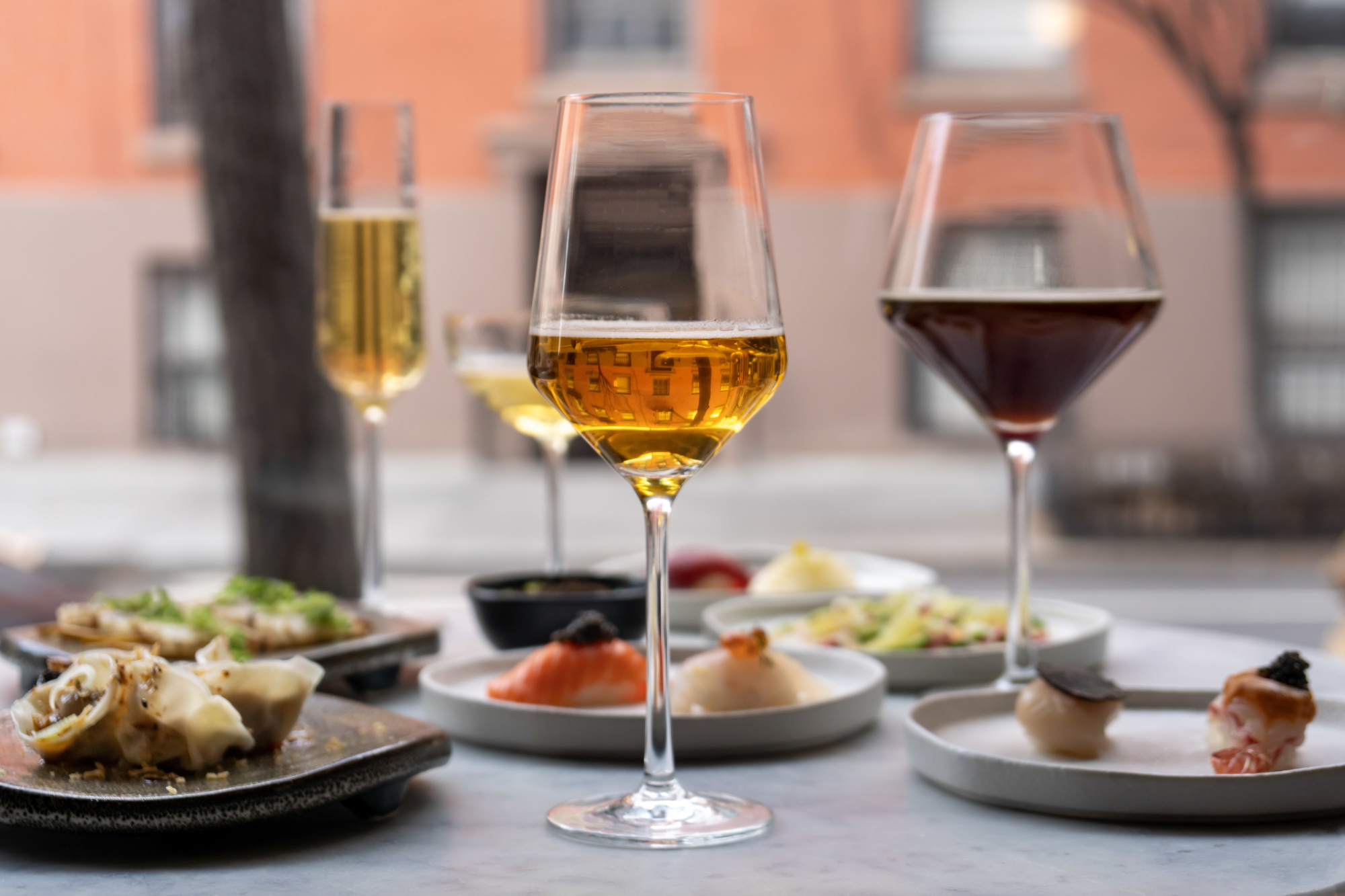
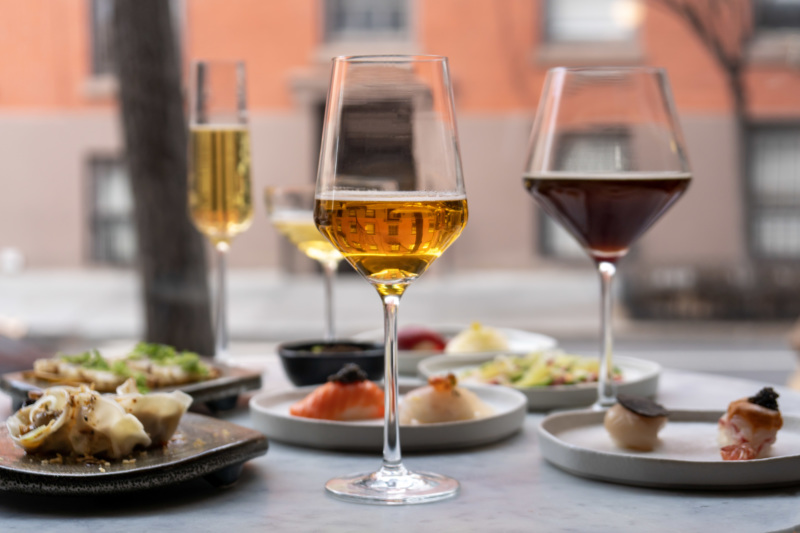
5. Expect the unexpected.
Rouben goes on to lament that beer still comes with the stereotype of feeling too full, broaching the subject with his passion for barrel-aged beer that he deems “perfect for digestifs.” But just like his Laphroaig (barrel-aged) Scotch Ale, he notes, “not every beer is meant to pair with sushi, but stronger and sweeter beverages can still be an important part of your culinary experience.” He adds, “We’re breaking a few rules when it comes to sushi,” which is unsurprising considering what they’ve done with beer and fine dining thus far.
Moody Tongue Sushi is open 5 to 11 p.m. Tuesdays through Thursdays, and from 5 p.m. to midnight on Fridays and Saturdays.
Michael Harlan Turkell is a photographer, writer, and cookbook author. He’s also host of the Modernist Pizza Podcast, which explores the art, history, and science of pizza. Follow him on Instagram and Twitter. Follow Resy, too.
Discover More

Stephen Satterfield's Corner Table
















